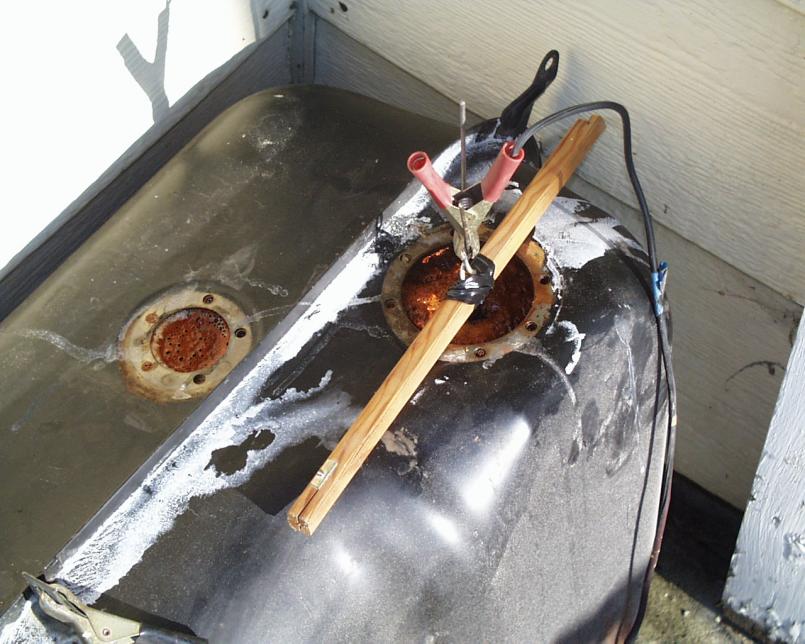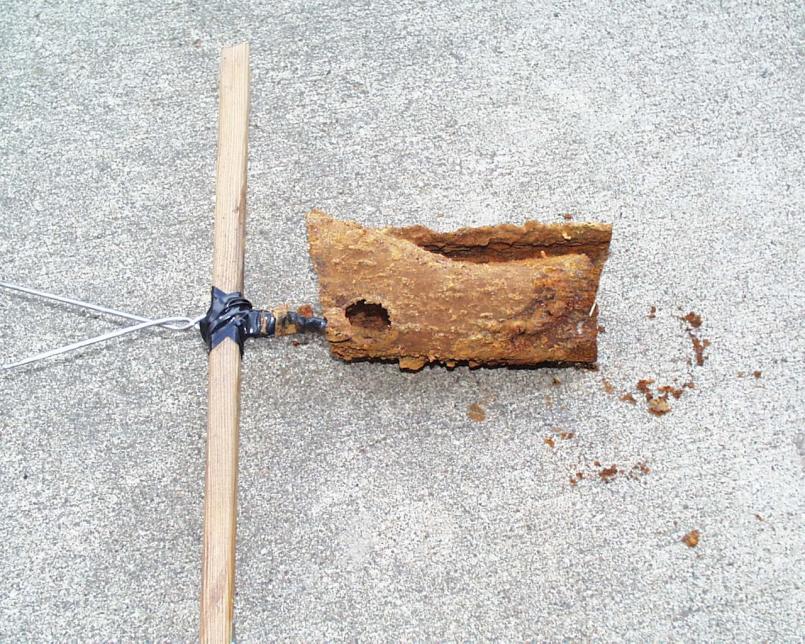|
|

|
Porsche, and the Porsche crest are registered trademarks of Dr. Ing. h.c. F. Porsche AG.
This site is not affiliated with Porsche in any way. Its only purpose is to provide an online forum for car enthusiasts. All other trademarks are property of their respective owners. |
|
|
| GWN7 |
 Jan 25 2008, 08:17 PM Jan 25 2008, 08:17 PM
Post
#1
|
|
King of Road Trips      Group: Members Posts: 6,280 Joined: 31-December 02 From: Winnipeg, MB, Canada Member No.: 56 Region Association: Northstar Region |
http://antique-engines.com/electrol.asp
A buddy tryed this method for doing small parts and said it worked ok. The site above has a link http://antique-engines.com/trailer-electrolysis.htm showing how to do a trailer. With a bigger tank you could do a whole car. |
  |
Replies(1 - 6)
| swl |
 Jan 25 2008, 08:33 PM Jan 25 2008, 08:33 PM
Post
#2
|
|
Senior Member    Group: Members Posts: 1,409 Joined: 7-August 05 From: Kingston,On,Canada Member No.: 4,550 Region Association: Canada |
tried it on a brake calliper. worked pretty well just took a while. there is also some directionality - you have to move the sacrificial anode around. don't know if I'd want to dip an entire 914 - may not be much left of it (IMG:style_emoticons/default/biggrin.gif)
|
| Wilhelm |
 Jan 25 2008, 11:12 PM Jan 25 2008, 11:12 PM
Post
#3
|
|
Member   Group: Members Posts: 408 Joined: 7-September 07 From: Hooterville, OR Member No.: 8,088 Region Association: None |
I've been doing this with a lot of parts lately; hard to believe things rust here in Oregon. (IMG:style_emoticons/default/dry.gif) http://www.914world.com/bbs2/index.php?showtopic=77251 Mostly doing small parts, but I have bandied about doing the whole dip thing as the chemical can be bought at the grocery store and is pretty non-toxic. This really works well for cleaning out the inside of gas tanks, no acid, no marbles, no trying to shake a partially full tank over your head.
|
| GWN7 |
 Jan 25 2008, 11:36 PM Jan 25 2008, 11:36 PM
Post
#4
|
|
King of Road Trips      Group: Members Posts: 6,280 Joined: 31-December 02 From: Winnipeg, MB, Canada Member No.: 56 Region Association: Northstar Region |
I must have missed that thread from before.....
It was susgested to strap the tank to a cement mixer to have it rotate easy for chemical cleaning. How would you get the electrodes in the tank or do you submerge the whole tank to do it the electric way? |
| Phoenix-MN |
 Jan 26 2008, 08:54 AM Jan 26 2008, 08:54 AM
Post
#5
|
|
Senior Member    Group: Members Posts: 927 Joined: 23-January 04 From: ST. Bonifacius,MN Member No.: 1,590 |
|
| Phoenix-MN |
 Jan 26 2008, 08:55 AM Jan 26 2008, 08:55 AM
Post
#6
|
|
Senior Member    Group: Members Posts: 927 Joined: 23-January 04 From: ST. Bonifacius,MN Member No.: 1,590 |
|
| Katmanken |
 Jan 26 2008, 12:44 PM Jan 26 2008, 12:44 PM
Post
#7
|
|
You haven't seen me if anybody asks...     Group: Members Posts: 4,738 Joined: 14-June 03 From: USA Member No.: 819 Region Association: Upper MidWest |
I've done this a lot and some of the so called "acid dippers" use this process.
I know American Meetal Refinishers here in Cinci seem to use a version of this process.... When they dip parts, they dip huge stainless baskets into a car size concrete tank in the floor. I noticed the concrete didn't bubble like from an acid spill and the baskets had etch lines on them. Watched them haul a model t out of the tank and no one was wearing gloves. That got me started and I researced the topic. Water is non conductive and needs an electrolyte in solution. I like lye for my electrolyte. Lye helps eat the paint, but it is hard to find now due to the gov cracking down on the damn crack manufacturers. A couple of tablespoons per gallon of water is a good mix Use stainless for an electrode, it lasts lots longer. Even so, you will etch field lines in the electrode. Don't allow the electrode to touch the part or you WILL need a new battery charger. (don't ask) Clamp the positive on the electrode and the negative to the part and place both in the elelectrolyte solution. Think field lines as that is what is being conducted between the electrode and the part and it is somewhat directional so rotate the part occasionally. Over time (multiple parts), you can actually see the field lines etched in the stainless. The process realistically should take several days at a high amp setting and several part rotations. However, that darn zinc paint the germans used on teener parts can slow things down- a lot. Remove the part and wirebrush with a brass brush to remove the black slime "rust" residue under running water. The cleaned part will last for quite a few months with no coating. J-tubes was a learning experience, the outside got clean, but nothing happens inside the tube. To clean the inside, I used a coathanger pushed into the bore with several plastic milk caps along the coathanger to prevent the electode from hitting the inside of the tube and toasting the charger. Right now, my process is speeded up a lot. I use an electrosurgical RF generator (very carefully) that dumps out a ton of power..... I've tried a lot of other electrode configurations and can say that a saturated sponge on a hood with a metal plate electrode on top of the sponge doesn't work. However, being a big thinker, I did fantasize plugging up floor holes with clay, flooding the floor with the electrolyte to a depth to the top of the longs and floating a "boat" on the solution with the electrode on the bottom of the boat. I did use the boat process on a 48 inch mower deck placed in a plastic pan. Used 2 styrofoam chunks skewered on the end of a metal rod electrode so it floats with the rod under the electrolyte Makes cable routing fun so that the positive cable hooked to the rod electrode doesn't dip in the electrolyte. Ken |
  |
1 User(s) are reading this topic (1 Guests and 0 Anonymous Users)
0 Members:

|
Lo-Fi Version | Time is now: 1st July 2025 - 07:02 AM |
Invision Power Board
v9.1.4 © 2025 IPS, Inc.









